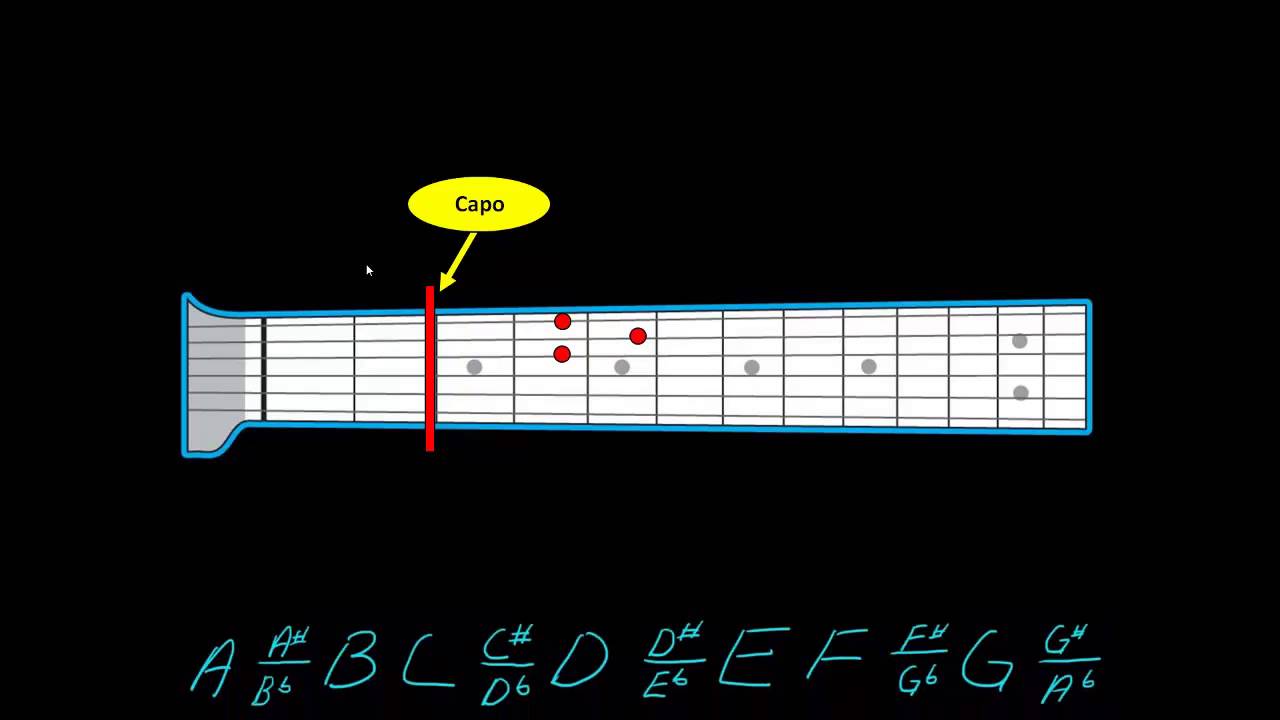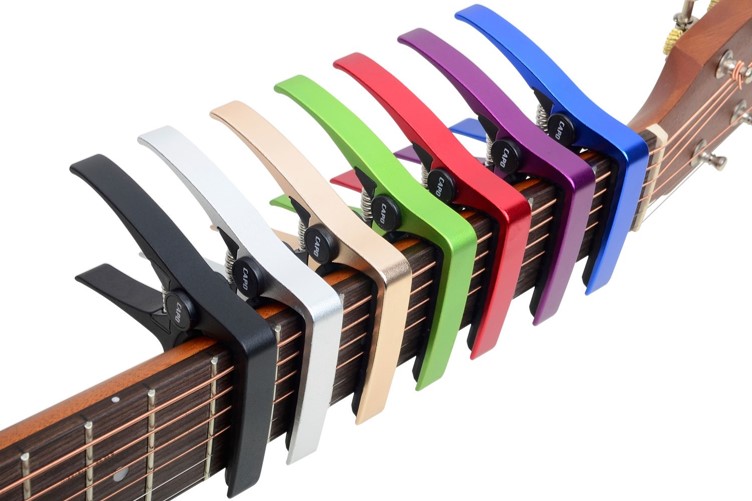Have you ever wondered how your favorite guitarist achieves those bright, clear chord tones and effortlessly shifts between keys? If so, you’re likely thinking about the humble yet powerful capo. In this article, you’ll gain an in-depth understanding of what a capo does for a guitar, as well as its benefits, types, and best practices for use. By the end, you’ll feel equipped to make the most out of this versatile tool in your musical journey.

What is a Capo?
At its core, a capo (short for capotasto) is a small device that clamps onto the neck of your guitar, pressing down the strings at a desired fret. The functionality of a capo essentially transforms your open strings to higher pitches by changing the nut’s position, fundamentally altering the guitar’s tuning.
How Does it Work?
A capo works by creating a new “zero fret,” effectively shortening the length of your guitar strings and raising the pitch by a semitone for each fret up the neck. This achieves a similar effect to tuning each string up, but without having to retune your guitar.
Example: When you place a capo on the 3rd fret, an open E chord turns into a G chord in its resultant sound.
Anatomy of a Capo
Understanding the various components of a capo can help you select the right one for your needs, and properly use it.
| Component | Function |
|---|---|
| Clamping Mechanism | Secures the capo onto the guitar neck |
| Padding | Protects strings and fretboard from damage |
| Adjustment Screw | Allows for tension control (in some models) |
| Release Button | Facilitates easy removal of the capo |
Why Use a Capo?
Using a capo can significantly expand your musical capabilities. Here are some primary reasons you might want to use one.
Key Transposition
A capo allows you to easily change the key of a song without having to learn new fingerings or chords. This is especially useful in live performances where quick adjustments are necessary.
Improved Playability
By shifting the key up, a capo can make difficult songs easier to play. For instance, if a song contains many bar chords, moving the key up can minimize these challenging formations.
Chord Variety
With a capo, you can use open chords in various positions to achieve a range of tonal colors. This can add depth and variety to your music, allowing for greater creative expression.
Vocal Accompaniment
When playing along with singers, the ability to quickly adjust the key to match the vocalist’s range is invaluable. A capo makes these adjustments seamless, providing a more harmonious performance.
Types of Capos
The market offers various capo designs, each with unique features aimed at fulfilling different needs. Understanding these types can help you choose the most appropriate one for your guitar and playing style.
Spring-loaded Capos
These are the most common types. They are easily adjustable and can be quickly attached or removed. However, they may exert uneven pressure on the strings, potentially affecting sound quality.
Screw Capos
Screw capos allow for precise tension adjustment, minimizing the chance of buzzing or muting. They take longer to set up, but they offer enhanced reliability.
Toggle Capos
Toggle capos are lightweight and affordable. They use a notched mechanism to secure the capo, making them convenient for quick changes. However, they might not provide a consistent pressure across all strings.
Partial Capos
Partial capos only press down certain strings, allowing for alternative tunings while keeping some strings open. This offers remarkable flexibility for experimental musicians.
Under-string Capos
Unlike traditional capos, under-string capos press from below the neck. This design is less common but can be useful for guitars with unconventional fretboards or for specific musical applications.
Proper Placement of a Capo
Achieving the best sound and performance from your capo requires careful placement and adjustment.
Accurate Positioning
Place the capo just behind the desired fret, ensuring it’s parallel to it. This minimizes string buzz and maintains intonation. Avoid placing it directly on the fret, as this will cause unwanted buzzing and potentially deaden the sound.
Pressure Adjustment
Ensure the capo exerts even pressure across all strings. Inconsistent tension can cause tuning issues or buzzing sounds. Modern capos often have adjustable tension settings to help with this.
Checking Intonation
Always check your guitar’s intonation after placing the capo. Minor adjustments may be required to keep your instrument in tune, particularly for higher frets.
Removal and Storage
When not in use, remove the capo to relieve pressure on your strings and neck. Proper storage will prolong the life of your capo and maintain its clamping strength.

Benefits for Beginner Guitarists
A capo is an invaluable tool for beginners, enabling simpler chord transitions and enhancing practice sessions.
Simplifying Complex Chords
By shifting the key, a capo allows beginners to play songs that might contain difficult bar chords with simpler formations.
Quick Key Changes
Beginners often struggle with transposing music to suit their vocal range. A capo enables quick and effortless key changes, making practice sessions more productive.
Enhanced Creativity
Using a capo encourages beginners to experiment with various keys and chord shapes, fostering a more adventurous musical approach.
Benefits for Advanced Guitarists
For seasoned musicians, a capo offers opportunities for creative expression and technical refinement.
Expanding Harmonic Horizons
Advanced players can leverage the capo to explore alternative tunings and unconventional chord voicings, enriching harmonic content.
Technical Challenges
Experimenting with partial or under-string capos can present new technical challenges, fostering skill development and precision.
Performance Versatility
Proficient players often need to adapt to different musical settings. A capo provides the flexibility to adjust swiftly, ensuring a seamless performance.

Common Mistakes to Avoid
Certain errors can diminish the effectiveness of a capo. Here are common pitfalls and how to avoid them.
Over-tightening
Excessive tension can detune your guitar and cause string wear. Use just enough pressure to secure the strings.
Misalignment
Ensure the capo is properly aligned behind the fret. Misalignment leads to string buzz and poor intonation.
Neglecting Intonation Check
Always check and adjust your guitar’s tuning and intonation after placing the capo. Small shifts can significantly impact sound quality.
Maintenance and Care
Taking good care of your capo will extend its lifespan and maintain its performance.
Regular Cleaning
After each use, wipe down your capo to remove sweat and grime. This prevents corrosion and ensures a reliable grip.
Inspecting Padding
Check the padding regularly for wear and tear. Damaged padding can harm your strings and fretboard.
Storage
Store your capo in a cool, dry place when not in use. Extreme temperatures and humidity can weaken the clamping mechanism.

Conclusion
A capo is much more than a simple accessory; it’s a gateway to enhanced musicality and expression. Whether you’re a beginner looking to simplify chords, or an advanced player seeking new creative avenues, the capo can elevate your playing experience. By understanding its functions, types, and best practices, you’ll be well-equipped to harness its full potential.
In a world where musical versatility is a prized asset, the capo remains a quintessential tool for guitarists. Use it wisely, maintain it well, and you’ll find it an indispensable part of your musical toolkit.
Hello, I’m an author for My Guitar Advisor. I love writing about and playing guitar, mainly fingerstyle but dabble into all genres. I hope you enjoy my writing and reviews.
